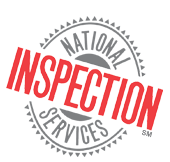Crumbling, Cracking, Settling, Heaving & Stains
Concrete is quite literally the foundation of many of today’s construction projects. It’s also widely used for exterior surfaces–driveways, sidewalks, patios, stoops, steps, etc. No wonder: Concrete is strong, durable, relatively inexpensive and can be formed into many shapes and sizes.
But concrete also has its drawbacks. It’s prone to crumbling, cracking, settling and heaving when exposed to the elements. It also stains rather easily.
As a property owner, how do you know which cracks, crevices and crumblings are serious and which are not? Which need repair and which don’t? The following is a brief guide to help you decide. When in doubt, always consult a professional.
Crumbling
When the surface layer of concrete flakes or crumbles away in patches, masons call this “spalling.” Spalling is largely a cosmetic flaw, but because it allows water to collect in the troughs it creates, it can also lead to more cracking and crumbling over time. Spalling concrete can be repaired by the do-it-yourselfer with epoxies and other cement-repair products available at your local building supply store. The area must first be routed out with a saw or chisel, cleaned then patched.
Crumbled step edges are more serious safety problems and should be fixed right away.
Cracking
Property owners are always concerned about cracked concrete.
A good rule of thumb is this: If building concrete (driveways, stoops, steps, patios) is cracked but still safe to drive and walk on, don’t be alarmed. Read up on the causes of concrete problems and how to repair them then fix the cracks (and the problem that caused them) at your leisure. Don’t ignore them for too long, however, because if you do, they’re bound to get worse.
Cracks up to 1/2″ wide can be repaired using either a mix of concrete bonding agent and cement, available as a repair kits, or a ready-mixed concrete patch product that is available in a caulk tube. For hairline cracks you may be able to use a ready-mix liquid repair product for better penetration. Badly damaged slabs or walks are best repaired by removing and replacing the damaged area.
Cracks in concrete that forms part of your building’s structure, on the other hand–foundations, footings, retaining walls, etc.–require more careful analysis and repair because they are usually the result of water damage and/or expansive soils and may be warning signs of building problems. Bulging concrete can really spell trouble.
Improving drainage in and around the cracked area is the first order of business. Long horizontal hairline cracks due to soil saturation can be ignored after you’ve eliminated the soil saturation problem. Large horizontal cracks in concrete block walls can often be “pinned” by inserting steel reinforcing bars vertically through the cores and grouting them in place. Hairline, “staircase”-type steps near the corners of the foundation are usually due to normal soil settlement. Larger such cracks may indicate ongoing movement or sinking of the foundation and are much more grave.
In general, the bigger the crack the more serious the problem. Also, the more the crack changes over time the more you should be concerned. If you’re unsure how serious the damage or its causes are, call a concrete contractor or a qualified building inspector for a professional viewpoint.
Settling & Heaving
Concrete structures that butt up against your building–such as stoops, steps and patios–merit regular assessment and maintenance. If improperly sloped or supported, these structures can wreak havoc with your building’s foundation.
Ensure that all are sloped slightly so that water is carried away from the building. If water runs toward your building due to improper placement or settling/heaving, try tightly caulking the joint where concrete and building meet. If the concrete drains too much water toward the building, the concrete may need to be replaced.
Stoops and slabs that are settling, rotating or heaving may need the soil beneath them to be better packed and/or re-graded. They may also need to be jacked and/or have new footings poured. Sometimes pins can be driven through the foundation into the stoop or slab to hold it in place.
Driveways and parking areas are essentially large slabs laid on the earth, often with a layer of gravel beneath them. In colder climates, ice forms below the concrete during the winter and can cause it to heave and crack. Most will have some cracks that you needn’t worry about unless they are a hazard to vehicles or pedestrians. Those that are thicker, well reinforced with wire and well drained will have the fewest problems.
Finally, tree roots can also cause concrete to heave, settle and crack. Removing the tree will prevent further heaving, though the soil beneath the concrete many remain unstable for years as the roots decay.
Stains
Oil and grease stains can be removed from driveways and garage floors with a cement cleaning product available at auto supply centers. Or try sprinkling dry portland cement over motor oil stains. Leave the cement on the stain until all the oil is absorbed, then clean up the cement with a broom or shop vac.
If the cement is dirty but not oil stained, try cleaning it with a strong solution of trisodium phosphate (TSP). Scrub the slab thoroughly, then rinse with clean water. To clean badly stained or very smooth concrete, you may need to etch it with muriatic acid then rinse thoroughly.
Garage floors and patios can also be painted or stained with specially formulated concrete products. Be sure to clean the concrete well according to the manufacturer’s instructions before you paint or stain or the new topcoat will fail.
